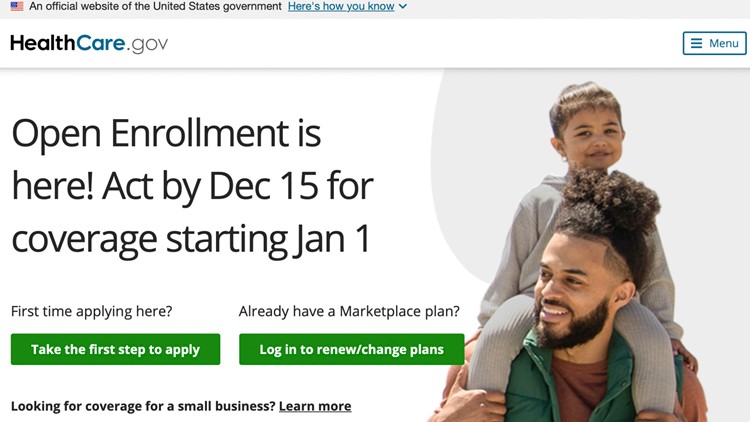WASHINGTON — It’s time to pick health coverage for next year on the Affordable Care Act’s insurance marketplaces, and experts caution against focusing your choice on price alone.
In order to prevent thousands of dollars in financial surprises, buyers should know what a plan covers, how it works and what costs you may have to pay upfront for care.
An annual enrollment window starts Wednesday and runs into December for Americans looking to buy individual coverage that begins Jan. 1. You're eligible if you don't have coverage through work, Medicare or Medicaid.
The marketplaces saw record enrollment of more than 16 million for this year. Officials expect business to be brisk again for 2024 plans partially because people have been losing Medicaid coverage that they kept through the COVID-19 pandemic.
Here are some things to consider when assessing marketplace plans.
Tax credits
The marketplaces offer plans with a range of premiums, which is the cost of coverage. They are grouped into platinum, gold, silver and bronze levels. The last level generally is cheaper but also requires patients to pay more toward their care.
Shoppers can get income-based tax credits to help buy coverage, but experts say to think carefully about the number they submit on their application.
The tax credits are based on what you expect to make in the coming year, not your current income. That means people who underestimate future income may wind up repaying some of the help they received.
Many people who haven't shopped on the marketplace don’t know that they can get this help, according to Jeremy Smith, who directs West Virginia’s health insurance navigator program.
“What we find is until people need to know, they don’t know,” he said.
Patient costs
Many low-cost marketplace plans come with deductibles that can require patients to pay thousands of dollars before most coverage kicks in. That will be new for someone switching from Medicaid.
“A lot of people don’t understand how deductibles work,” Smith said. “They’re just used to having health coverage … and it covers everything.”
Plans also can come with annual out-of-pocket maximums higher than $9,000 for individuals and $18,000 for families. That's the most a patient will have to pay in a year for covered services before insurance starts covering all the cost. Shoppers should think about whether they could handle big expenses like that.
The marketplace can provide some help with these costs, too. People with incomes below 250% of the federal poverty level can qualify for cost-sharing reductions if they pick a silver plan. That means they get lower deductibles and out-of-pocket maximums.
“The good news is a lot of people who’ve been in Medicaid will likely qualify for these cost-sharing reductions,” said Sabrina Corlette, co-director of Georgetown University’s Center on Health Insurance Reforms.
Coverage networks
Insurers form coverage networks of hospitals and doctors. Patients with regular doctors should make sure those care providers are covered under any plan they want to purchase.
Many marketplace plans will not cover claims for most non-emergency care outside their networks. Health maintenance organizations (HMOs) or exclusive provider organizations (EPOs) generally fit this bill.
“You’re pretty much stuck with the doctors that you have in your network,” said Cynthia Cox, a vice president with KFF, a nonprofit that studies health care issues.
Nearly eight out of every 10 plans on the exchange are either an EPO or an HMO, according to a KFF analysis. That mix can vary by state.
HMOs also require patients to have a primary care doctor who directs that person's care and recommends visits to a specialist if needed. Without that recommendation, the specialist visit may not be covered.
Health insurers also have been trying to limit emergency room visits to true, life-threatening emergencies. They may not cover ER claims that don’t match that description.
That could be a big change for people on Medicaid, many of whom visit ERs for a lot of their care, noted Kelly Fristoe, an independent insurance agent based in Wichita Falls, Texas.
Who can help?
Agents can help people sort through all these variables when looking at marketplace plans. They usually get a flat fee that’s baked into the coverage costs.
State marketplaces also have navigators like Smith who can assist with sorting through options and understanding potential plans. The government-funded navigators are free for shoppers, but cannot recommend any specific choices.
Agents and navigators recommend starting your search well before December to avoid a deadline crunch that hits when most enrollment windows begin to close.



